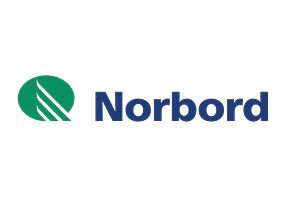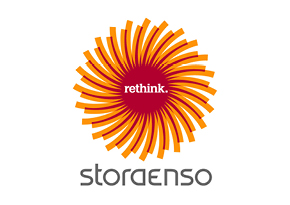- Case Studies
- Great Bow Yard, Langport, Somerset
Great Bow Yard, Langport, Somerset
Introduction
Ecos Homes is the development subsidiary of the Ecos Trust, established in 2000 ‘to make sustainable construction the norm, rather than the exception, by 2010'. To demonstrate the principles of sustainable construction, a decision was made to build a not-for-profit sustainable development in which social and environmental values were as important as economic values.
The site, at Great Bow Yard, Langport, Somerset, was bought on the open market in 2003. A lengthy design process followed and work started on site in autumn 2004. Both the site and the brief presented many obstacles. The site, a historic wharf on the river Parrett next to a Grade II-listed warehouse, had been used by a company that manufactured lubricants and was classified as contaminated, it contained a badgers' sett, which had to be moved, and a deep layer of peat lay just below the surface of the ground, requiring piling to be carried out before building work started. At the start of the development the Trust set out a number of basic aims for the development: to minimise energy consumption for building materials, the construction process and end use of the building, to use recycled or sustainable materials, to create a positive local impact, to reduce water use and to design ‘healthy' buildings.
Building description
The development has a mix of housing types - flats, townhouses and 3- and 4-bedroom houses - integrated within two terraces. The North Wing terrace - comprising five three-storey 3- and 4-bedroom houses - is orientated to allow living/dining rooms, ‘sun spaces' and gardens to take advantage of solar gain from the glazed southern aspect. The main bedroom on the first floor has balcony access to the sun space and on the second floor there are two more bedrooms. The main entrance is on the north side, through a single-storey porch, with car parking at the rear of the site. Rainwater harvesting systems are installed on all dwellings; tanks located on the porch roof direct rainwater into wc cisterns for flushing. Heating is by means of highly efficient gas condensing boilers, backed up with solar water heaters.
The East Wing terrace, three-storeys high, consists of three townhouses and four flats. The town houses are designed with living space and kitchen on the top floor, with generous rooflights and views out over the river from glazed doors and a balcony. The ground floor houses an integral garage and a study/bedroom; the first floor has a master bedroom, also with balcony, a smaller bedroom and bathroom. The town houses are fitted with photovoltaic panels. An ecological landscaping scheme is planted between the two wings and alongside the river.
Materials and method of construction
The north wing
The south-facing elevation is largely glazed, with a ‘sun space', a fully glazed extension set in front of the living space which acts as an extra room and preheats ventilation to adjacent rooms. Heat is stored by the ‘thermal mass' of the construction at ground level - a dense masonry inner leaf with a highly insulated timber frame on the outside, clad with 150 x 9mm square-edge horizontal red cedar boards on battens. The upper floor construction is timber. On the south facade, Douglas fir timber louvres, set at an angle to protect against summer sun but admit light and heat at other times, are fixed at upper levels to the outside of the timber frame.
The east wing
To guard against flood risk, masonry construction was used from foundation to first floor, with upper floors of timber frame construction using bespoke Masonite timber I-beams filled with Warmcel recycled newspaper insulation. Upper floors are clad with 150 x 9mm square-edge horizontal timber boards on battens; the ground floor porches are clad with locally-sourced larch boards set in galvanised steel frames. The gable walls are built of reclaimed brickwork with lime mortar joints. The roof is a series of ridges, of which the south facing pitches are used for connection to solar energy units.
Timber specification
The timber specification was written with great care to guarantee proof of a chain of custody from forest to site and to allow contractors scope to source material locally if it were known to be produced in a sustainable manner.
The timber frame
Most of the structural timber for the development was supplied by the timber frame company who were selected to build the shell. Timber I-beams were used throughout the development; they use less resources than traditional solid wood joists and the central web is constructed of OSB (oriented strand board). I-beams are manufactured with ‘knock-outs' for service runs, reducing the need for on-site drilling. The external envelope of the buildings used a bespoke I-beam comprising two flanges of timber connected by intermittent webs, which allowed the void between the two skins to be filled with insulation. The frame was clad with OSB sheets of varying thickness. OSB is made from strands, flakes or wafers pressed together with resin binders and utilises over 90% of the log, an energy-efficient way of producing a sheet material for construction. The upper floors in both wings were covered with sustainable- sourced plywood.
It is not necessary for structural timber within a well-detailed shell to be treated against rot or insect attack. However the houses were built for sale and had to carry the standard NHBC 10-year guarantee, which still requires such treatment. The team is confident that for future developments the NHBC will be persuaded that this is not necessary.
Cladding
The buildings are largely clad with western red cedar, a material selected for its lightness and strength, resistance to weather and appearance. The initial amber colour will gradually give way to silver as the buildings age. The natural oils in the wood mean that no timber treatments need to be applied. The expected life of the cladding is more than 40 years.
The cedar was obtained from the Forest of Dean where a plentiful supply was available due to widespread planting in the 1950s. Other, more local, sites were unable to produce the volume required, but the road-miles achieved are good in comparison to other developments in the UK where cedar is imported from Canada and Scandinavia.
Decking
The timber for the external decks is PEFC certified and treated using Tanalith E, a non-toxic treatment which meets the relevant regulations for timber treatment.
Great Bow Yard scored a BRE Eco Homes rating of ‘Excellent', the highest score that can be achieved. It was also awarded the Daily Telegraph gold award for Best Sustainable Homes.
2005
Year Published:November 2008
Building Type:Terrace housing
Location:Langport, Somerset
Country:England
Client:Ecos Homes
Architect: Structural Engineer: Main Contractor:Russell Construction
Timber Frame Sub-Contractor:Framewise
Timber Supplier:Woodstock Timber Co
Timber Element(s):Cladding, louvres and sun spaces
Timber Specie(s):Red cedar, larch and douglas fir
Suggested Reading
Standards Update October 2017
An update of British, European and International Standards relating to timber, including new and revised Standards, those withdrawn or amended and drafts now available for public comment, updated bimonthly.
30/10/2017
Action needed to maintain UK wood supply
Recent reports suggest that the availability of British timber is in danger. Stuart Goodall outlines the facts and the solutions available.
Article from Timber 2017 Industry Yearbook
15/06/2017
Delivering sustainability: what does the construction industry want from its timber and timber product suppliers?
Sustainability is a key concern for those who work with timber. Charlie Law reviews feedback from sustainability professionals within the construction industry summarising what is being achieved and what more can be done to meet the standards required.
Article from Timber 2017 Industry Yearbook
15/06/2017


























